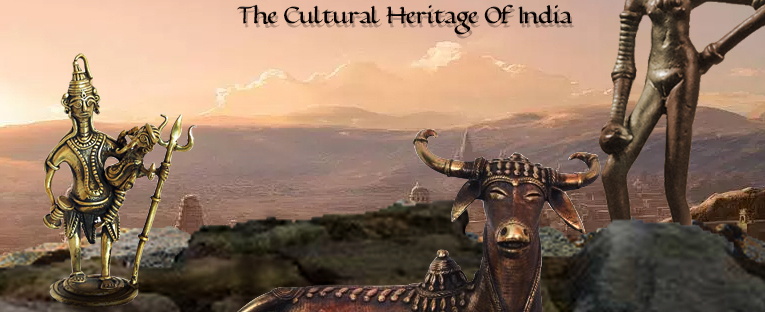
Dhokra Also Spelt Dokra Is A Non-Ferrous Metal Casting Work Using The Lost Wax Casting Technique. This Sort Of Metal Casting Technique Has Been Used In India For Over 4000 Years & Is Still Used.The Craft Dokra Is One Of The Ancient Indian Art Forms Showcasing The Local Lifestyle & Cultural Life Of People Making The Art. This Primitive Technique Can Be Traced Back To The Indus Valley Civilization. The Bronze Cast Dancing Girl Model From The Ruins Of Mohenjo-Daro Seems To Be Representative Of This Class Of Technique.
This Tribe Extends From Jharkhand To West Bengal, Chhatisgarh, Andhra Pradesh & Orissa. The Product Of Dhokra Artisans Is In Great Demand In Domestic And Foreign Markets Because Of Primitive Simplicity, Enchanting Folk Motifs And Forceful Form. If We Go Back To Few Hundred Years Ago The Dhokras Traveled To Southern Indian Handicrafts, Central & Eastern India As Far As Kerala And To North As Far As Rajasthan And Hence Are Now Found All Over India.
The Dhokra Sculpture Has A Power Of Emotional & Spiritual Value, With Forms Almost Verbal, Narrating Stories That Its Creator Intended To. The Vivid Indian Handicrafts Depictions Of Gods And Goddesses, Intricate Lamps, Bells And Ornaments Were Greatly Revered. In India, The Ancient Scholarly Work ‘Shilpshastra’ Takes Us To The Detail Of Metal Working With Alloys And Casting Of Wide Range Of Utilities From Daily Use Items, Sacred Artworks And Architectural Products. Metal Casting Work Largely Derives Its Inspiration From Religion. Before Any Artisan Sits To Make The Figure, He Prays For Guidance From Tristram (son Of Lord Vishwakarma), Said To Be An Expert In Metal Alloys.
In The Odisha Region, This Is A Typical Tribal Craft In Bronze With Its Mesh Like Features Giving It An Amazing Beauty. The Tribal Families Of Sadeibareni Produces This Very Unusual Indian Handicrafts. There Are Many Types Of Indian Handicrafts Produced In The State Of Odisha And Generally These People Are Very Artistic & Creative. The Sun Temple At Konark Is A Standing Testimony To This. In The Bastar District Of Chhattisgarh, Dhokra Indian Handicrafts Work Is Done By A Metal.They Are Regarded As Artists First And Then Metal Workers As What They Do Involves A Creative Mind Not Just Giving A Material Shape.The Traditional Themes Of These Cast Metal Sculptures Include Images Of Hindu Or ‘tribal’ Gods And Goddesses Or Deities Riding Elephants, Musicians, Horse And Rider Figures Of People, Animals, And Birds.
The Process Of Making This Eye-Catching & Magnificient Traditional Indian Handicrafts Is Created Through Two Main Process Lost Wax Casting: Solid Casting & Hollow Casting. Solid Casting Does Not Use A Clay & It Utilises A Solid Piece Of Wax To Create The Mould; Hollow Casting Is The More Traditional Method And Uses The Clay Core. We Have To Join Hands To Preserve This Types Of Ancient Crafts Forms & Techniques Which Shows How Rich Our Country India Is In Culture & Indian Handicrafts Online. We Should Pass This Information From Generations To Generations To Keep This Legacy Alive.